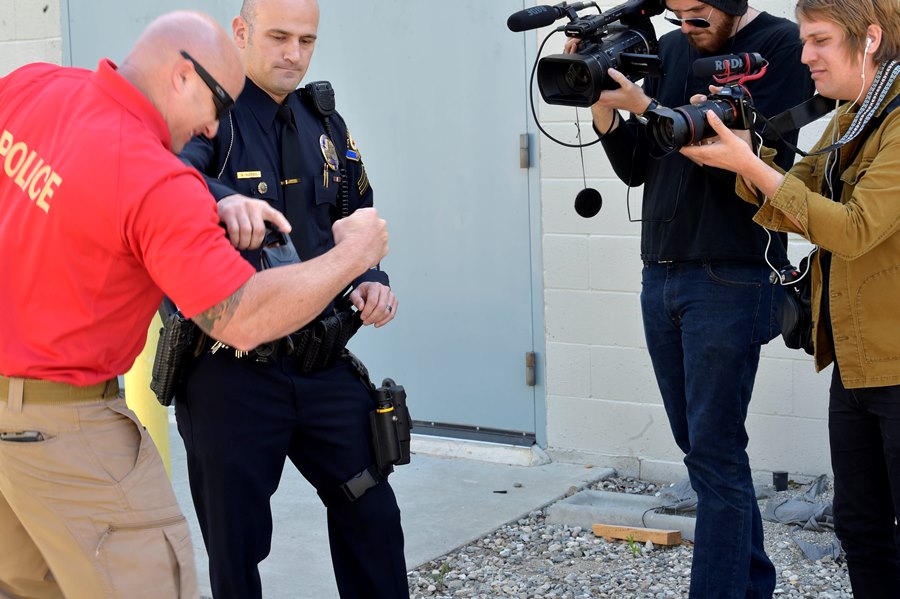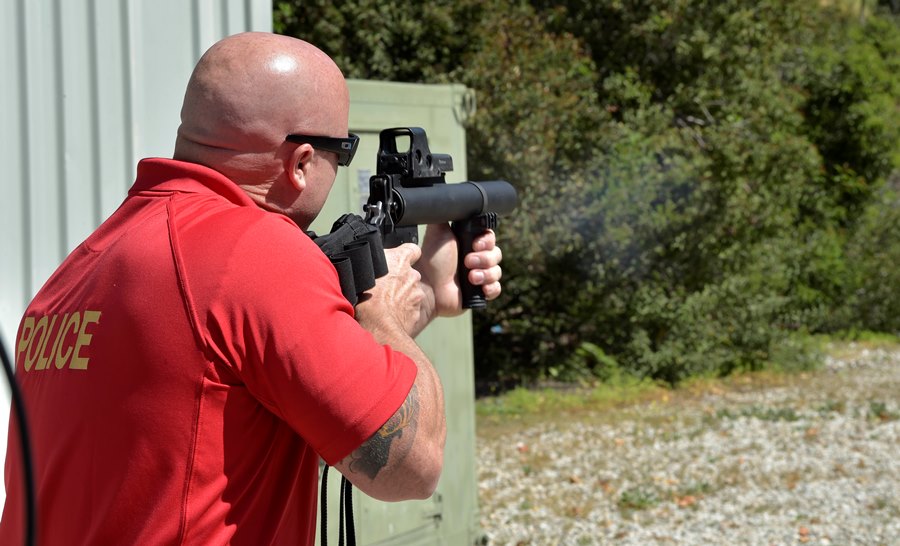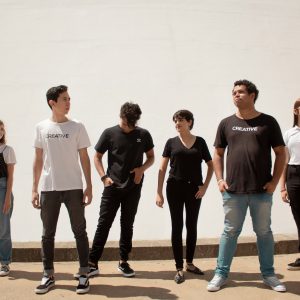 View Winners →
View Winners → A Day in the Life of a Pasadena Police Officer


Split second evaluations are critical in keeping the peace
By Terry Miller
On Monday morning, this reporter and several local news colleagues were invited to the Pasadena Police Weapons Training Facility on Eaton Canyon Drive, for a four-hour crash course in understanding what peace officers face when making a traffic stop or go out on a ‘routine’ call. It was an exacting and poignant experience.
The tactics Pasadena Police use are critical in understanding just how precarious law enforcement jobs can be and how quickly a seemingly routine incident can become volatile.
Interim Pasadena Police Chief John Perez addressed the small class of local journalists assembled in a training classroom Monday to describe, in detail, how police use-of-force procedures and policy has changed over the years, and how police officers must make multiple crucial decisions precipitously for any given situation and deal with multiple scenarios.
Officers are taught from the outset, that use of deadly force is a last resort. There are numerous options available like OC Pepper Spray, Taser, 40mm, and Baton. However, when a suspect appears to be reaching for a weapon and is non-compliant with the officer’s commands, the situation changes at an alarmingly rapid clip.
The hands-on and virtual scenarios we experienced involved just that, making rapid decisions at a moment’s notice while carrying heavy equipment including a Taser, pepper-spray, and communications equipment, which included a body camera and a service revolver.
Keep in mind that when an on-duty officer is in the field he/she will also be wearing a lot more equipment, a safety vest and other equipment such as extra clips, handcuffs, a baton and many other items that are heavy and cumbersome.
We learned that making multiple decisions and assessing the situation when approaching any suspect is far more complex than anyone could possibly imagine.
After reviewing the policy and procedures, officers played some extremely disturbing videos where law enforcement officers faced gunfire when least expected.
The reaction time varies but essentially, a spilt second decision could mean the difference between life and death.
In my first simulated experience in the training room, I was partnered with Lisa Derderian, Pasadena’s Interim PIO. Derderian and I were the ‘officers’ on a call regarding a male with a knife acting suspiciously. Derderian and I were both attacked by the suspect because we didn’t react quickly enough nor take appropriate cover when confronting the male suspect. The whole scenario took mere seconds and we lost our lives.
Its exercises like this that really open your eyes to what law enforcement officers face every time they go on a call.
Recent negative publicity of law enforcement throughout the nation has spawned distrust of many law enforcement agencies, and Pasadena is no exception. With Interim Chief Perez, the department is looking to change that public perception and hone a more community oriented police force that the city can trust implicitly.
Luckily, I lived to tell the tale. Not everyone is so lucky.
In assessing a scene prior to conflict, officers (who by the way are human beings first) have to know how to de-escalate any given scenario.
De-escalation techniques are actions used by officers, when safe to do so and without compromising law enforcement priorities, that seek to minimize the need to use force during an incident. According to Pasadena PD policy, these techniques may increase the likelihood of voluntary compliance or provide officers with opportunities to decrease levels of applied force when appropriate. Less-lethal options include OC Pepper Spray, Taser, 40mm and retractable Baton.
- Physical force options (i.e. control holds, carotid restraint)
When time and circumstances reasonably permit, officers should consider whether a subject’s lack of compliance is a deliberate attempt to resist or an inability to comply based on factors including but not limited to:
- Medical conditions
- Mental impairment
- Developmental disability
- Physical limitation
- Language barrier
Law enforcement encounters are fluid, rapidly evolving, and ever-changing. When situations present themselves that may potentially necessitate force, officers should consider de-escalation techniques to bring the incident to conclusion.






































































































